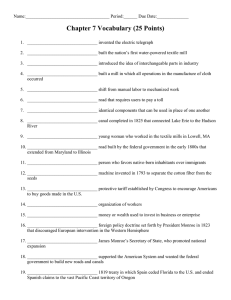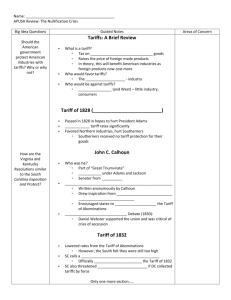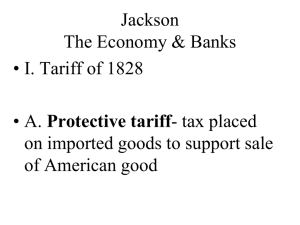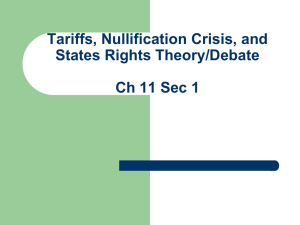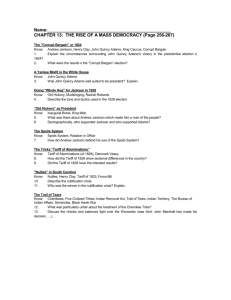Calhoun's Exposition Chart
advertisement
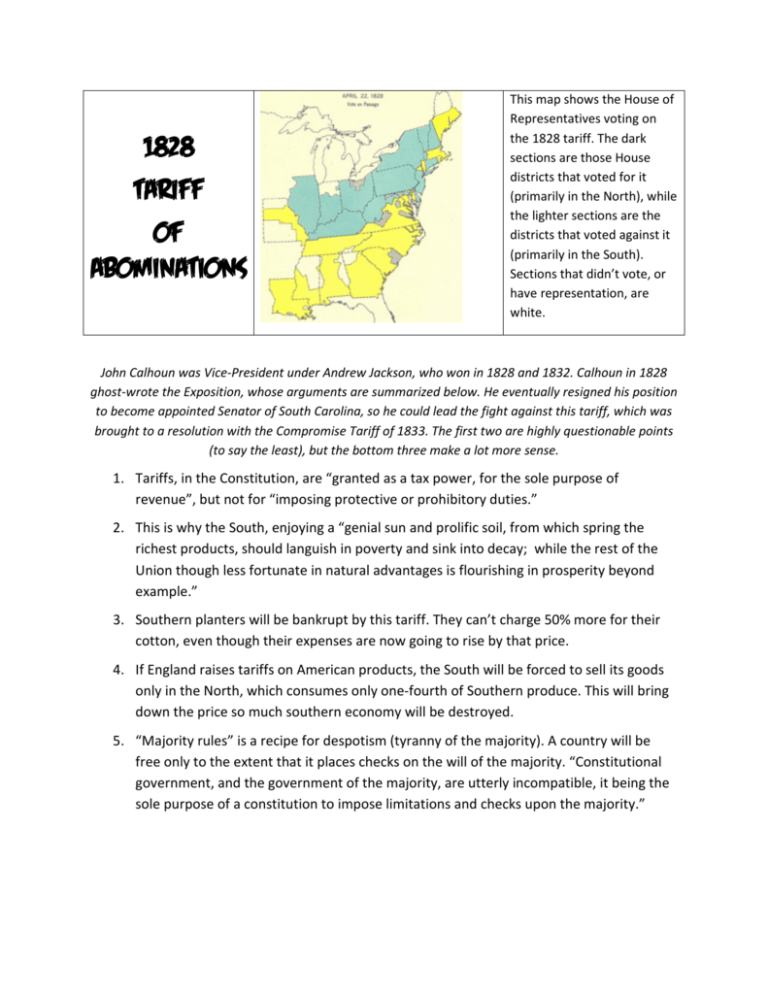
1828 Tariff of Abominations This map shows the House of Representatives voting on the 1828 tariff. The dark sections are those House districts that voted for it (primarily in the North), while the lighter sections are the districts that voted against it (primarily in the South). Sections that didn’t vote, or have representation, are white. John Calhoun was Vice-President under Andrew Jackson, who won in 1828 and 1832. Calhoun in 1828 ghost-wrote the Exposition, whose arguments are summarized below. He eventually resigned his position to become appointed Senator of South Carolina, so he could lead the fight against this tariff, which was brought to a resolution with the Compromise Tariff of 1833. The first two are highly questionable points (to say the least), but the bottom three make a lot more sense. 1. Tariffs, in the Constitution, are “granted as a tax power, for the sole purpose of revenue”, but not for “imposing protective or prohibitory duties.” 2. This is why the South, enjoying a “genial sun and prolific soil, from which spring the richest products, should languish in poverty and sink into decay; while the rest of the Union though less fortunate in natural advantages is flourishing in prosperity beyond example.” 3. Southern planters will be bankrupt by this tariff. They can’t charge 50% more for their cotton, even though their expenses are now going to rise by that price. 4. If England raises tariffs on American products, the South will be forced to sell its goods only in the North, which consumes only one-fourth of Southern produce. This will bring down the price so much southern economy will be destroyed. 5. “Majority rules” is a recipe for despotism (tyranny of the majority). A country will be free only to the extent that it places checks on the will of the majority. “Constitutional government, and the government of the majority, are utterly incompatible, it being the sole purpose of a constitution to impose limitations and checks upon the majority.”

